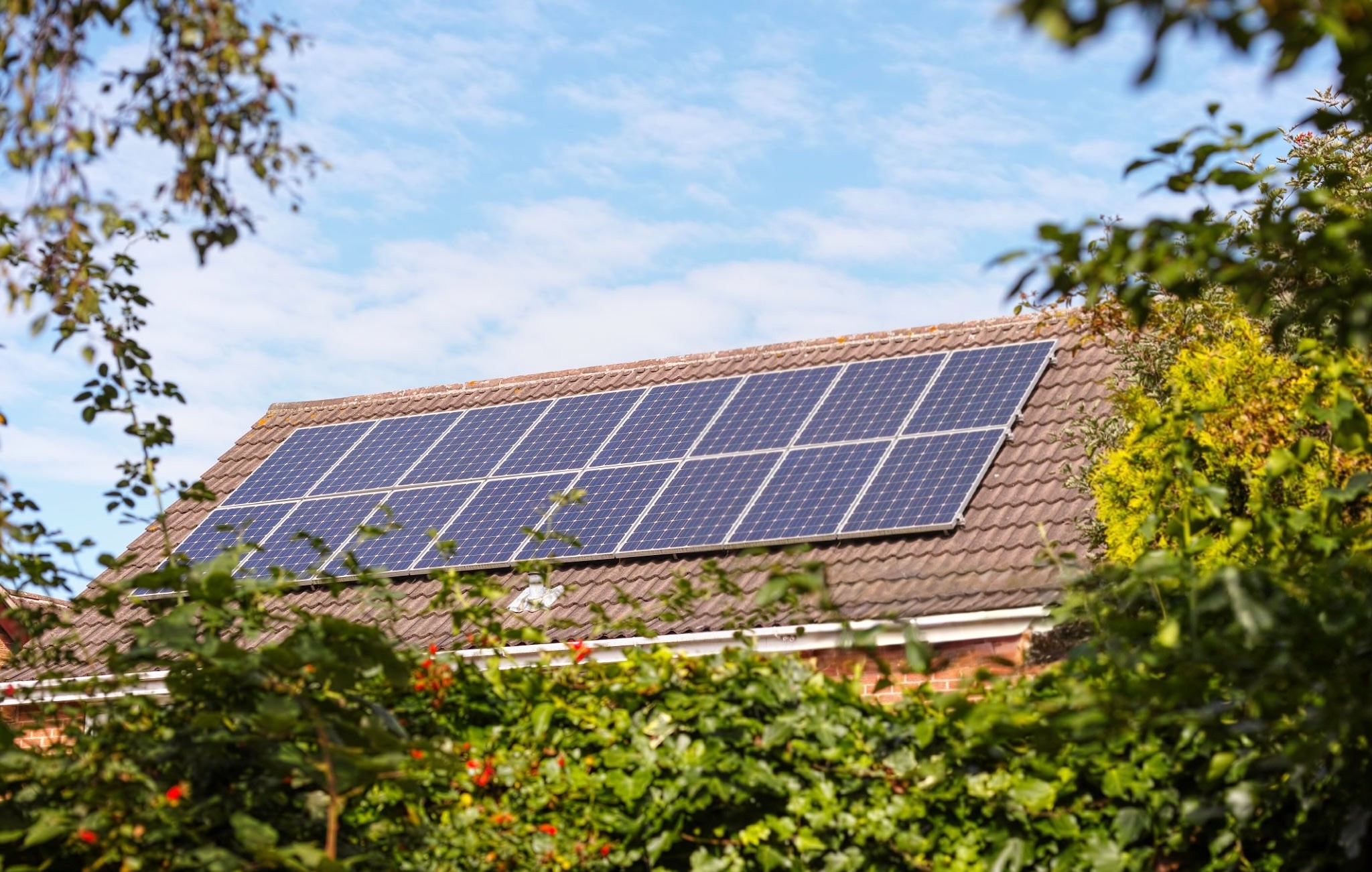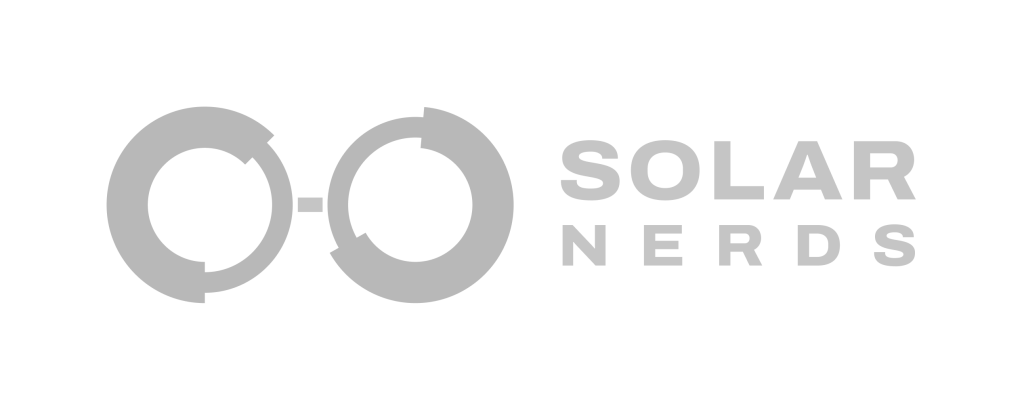Table of Contents
Understanding the 6.6kW Solar System
What is a 6.6kW Solar System?
A 6.6kW solar system is a photovoltaic (PV) system designed to generate up to 6.6 kilowatts of power under optimal conditions. It consists of solar panels, an inverter, and mounting equipment. This system size is well-suited for average Australian households, offering enough energy to significantly reduce electricity bills while providing a reasonable return on investment.
Why a random number like "6.6"?
Australian regulations permit up to 133% oversizing of an inverter. Oversizing is when you install more kW of panels than the inverter’s kW capacity. For example in a 6.6kW solar system, it’s common to pair the panels with a 5kW inverter.
This practice, allows the system to maximize energy production, especially during peak sunlight hours.
Components of the System
Solar Panels
The solar panels are the most visible part of the system, responsible for converting sunlight into direct current (DC) electricity. A 6.6kW system typically requires between 15 to 20 panels, depending on the wattage of each panel. For instance, if you use 440W panels, you’ll need about 15 panels, whereas 330W panels would require around 20.
There are two main types of solar panels:
- Monocrystalline Panels: Made from a single crystal structure, these panels offer higher efficiency and a sleek black appearance.
- Polycrystalline Panels: Composed of multiple crystal fragments, they are generally less expensive but slightly less efficient than monocrystalline panels.
Inverter
The inverter is a central element of any solar energy system, responsible for converting the direct current (DC) generated by your solar panels into the alternating current (AC) that your household appliances and devices rely on.
Without an inverter, the electricity produced by your panels wouldn’t be compatible with your home’s wiring or the broader grid. In addition to performing this essential conversion, many modern inverters also include features like performance monitoring, safety shutoffs, and advanced controls that help ensure consistent, reliable power delivery.
Usually a 6.6kW will have a 5kW inverter in a practice called “oversizing”.
Mounting Equipment
Mounting equipment secures the solar panels to your roof. The amount of roof space required for a 6.6kW system ranges from approximately 25 to 40 square meters, depending on the number and size of the panels. Proper orientation and tilt are essential to ensure the panels capture the maximum amount of sunlight. In Australia, this typically means positioning panels to face north at an optimal tilt angle, but adjustments can be made based on your roof’s orientation and your household’s energy consumption patterns.
Energy Production and Efficiency
How Much Electricity Does a 6.6kW System Produce?
A 6.6kW solar system can produce between 24 to 29 kilowatt-hours (kWh) of electricity per day on average. The actual output varies depending on your location within Australia due to differences in sunlight hours and climate conditions. For example:
- Brisbane: Approximately 27.7 kWh per day
- Sydney: Approximately 25.7 kWh per day
- Melbourne: Approximately 23.8 kWh per day
- Perth: Approximately 29.0 kWh per day
- Adelaide: Approximately 27.7 kWh per day
These figures represent average daily production and can fluctuate based on seasonal changes and weather patterns.
Factors Affecting Energy Production
Sunlight Hours and Weather Conditions
The amount of sunlight your location receives significantly impacts the energy production of your solar system. Areas with more sunny days and longer daylight hours will yield higher energy output. Seasonal variations also play a role; solar systems produce more energy in summer months when days are longer and the sun is higher in the sky.
Panel Orientation and Shading
Orientation in the Southern Hemisphere
In Australia, which is in the Southern Hemisphere, the sun travels through the northern part of the sky. Therefore, north-facing panels receive the most sunlight throughout the day and are ideal for maximising total energy production.
However, depending on your household’s energy usage patterns, it may be beneficial to install panels facing east or west:
- East-Facing Panels: Capture morning sunlight, which is advantageous if your household consumes more electricity in the morning hours.
- West-Facing Panels: Receive more sunlight in the afternoon and early evening, beneficial for households with higher energy use during these times.
Detailed Considerations
Aligning the panel orientation with your peak energy usage times can enhance self-consumption, reducing reliance on the grid and maximizing savings. If your roof doesn’t face true north, east, or west, solar installers can design a system that still performs efficiently by adjusting the tilt and using specialized mounting equipment.
Shading Considerations
Shading from trees, nearby buildings, or other obstructions can significantly reduce a solar system’s efficiency. Even partial shading can impact the performance of the entire panel string in traditional systems. Solutions to mitigate shading effects include:
- Micro-Inverters: Devices installed on each panel to ensure that shading on one panel doesn’t affect the others.
- Power Optimisers: Similar to micro-inverters, they maximise the energy output of each panel individually.
Regular maintenance, such as trimming overhanging branches, can also help minimise shading issues.
Panel Efficiency and Temperature Coefficients
The efficiency of solar panels determines how much sunlight they can convert into electricity. Higher efficiency panels produce more energy but are generally more expensive. Temperature also affects panel performance; as temperatures rise, the efficiency of panels typically decreases. Quality panels with better temperature coefficients will have less reduction in performance on hot days, which is particularly important in Australia’s climate.
Financial Aspects
Cost of a 6.6kW Solar System
The cost of a 6.6kW solar system in Australia typically ranges from $5,000 to $9,000, including installation and before any rebates. Several factors influence the total cost:
- Quality of Components: Premium panels and inverters come at a higher price but offer better performance, durability, and longer warranties.
- Installer Rates: Experienced and accredited installers may charge more for their services, but this can be a worthwhile investment for quality assurance.
- Installation Complexity: Roof type, pitch, height, and accessibility can affect labor costs. Additional equipment may be needed for complex installations.
It’s important to obtain detailed quotes from multiple installers to understand what is included in the price and to compare the value offered.
Government Incentives and Rebates
Small-Scale Technology Certificates (STCs)
The Australian Government provides financial incentives for solar installations through the Small-Scale Renewable Energy Scheme. When you install a solar system, you earn STCs based on the size of the system and your location. These certificates have a monetary value and are typically sold to the installer, who then provides a discount on the upfront cost of your system.
For a 6.6kW system, the STC rebate can significantly reduce the initial investment, making solar power more accessible to homeowners.
Feed-in Tariffs
Feed-in tariffs are payments you receive from your electricity retailer for excess solar energy exported back to the grid. The rates vary by state and retailer, generally ranging from 5 to 12 cents per kWh. While feed-in tariffs have decreased over the years, they still contribute to the overall financial return of your solar system.
Return on Investment
Investing in a 6.6kW solar system can lead to substantial savings on your electricity bills. The typical payback period is between 3 to 6 years, depending on factors such as:
- Your Energy Consumption: Higher self-consumption of solar energy results in greater savings.
- Electricity Rates: Higher grid electricity prices increase the value of the energy you generate.
- Feed-in Tariffs: Higher rates improve the return on excess energy exported to the grid.
Over the lifespan of the system, which can be 25 years or more, the cumulative savings can be significant, making solar power a financially sound investment.
Choosing the Right Solar Installer
Options for Purchasing Solar
Using Solar Quote Services
Websites like SolarQuotes.com.au and SolarChoice.net.au allow you to receive multiple quotes from different solar installers by entering your details online. These platforms offer several advantages:
- Convenience: Quickly obtain and compare quotes without contacting each installer individually.
- Competitive Pricing: Installers may offer better rates to be competitive within the platform.
- Verified Installers: Many quote services vet the installers for accreditation and quality standards.
However, there are some considerations:
- Limited Selection: Not all installers participate in these platforms, potentially excluding local or specialised companies.
- Potential Marketing Calls: Providing your contact information may result in follow-up calls or emails.
- Bias: Some services may favour certain installers due to partnerships or sponsorships.
Contacting Installers Directly
Reaching out to installers directly can provide a more personalized experience. Benefits include:
- Direct Communication: Allows for detailed discussions about your specific needs and expectations.
- Customised Solutions: Installers can tailor the system design to your property and energy usage patterns.
- Local Expertise: Especially important in regional areas where local knowledge can impact system performance and compliance.
For homeowners in regional Australia, working with a local installer may offer advantages such as quicker response times for service and a better understanding of local conditions.
Accreditation and Installer Qualifications
Types of Accreditation
The words installer and retailer are often used interchangeably but technically they are not the same. An installer is the business that goes on your roof to install the solar. A retailer is a business that approaches you to sell you solar.
There are two main accreditation types. One for installers and one for retailers. The usual accreditation for installers is SAA whereas the usual accreditation for retailers is NETCC.
Importance of NETCC Accreditation
NETCC is an optional program retailers can participate in to prove to the public that they are a trusted retailer. NETCC puts the retailer through a series of checks and the retailer subjects themselves to additional rules that are not required for an unregistered retailer.
Throughout the industry however, there have been complaints that the barrier to entry is too low, so most retailers who apply get approved, making the accreditation less valuable.
Picking a NETCC accredited retailer may give you comfort, however it is not enough to hang your hat on. Further investigation will likely need to be done.
Importance of SAA Accreditation
On the other hand, choosing an installer accredited by Solar Accreditation Australia (SAA) is not a choice, but a must.
This accreditation is for the individual, rather than the business, and ensures that they meet industry standards for safety and quality. SAA-accredited installers are required for you to be eligible for government incentives like the STC rebate.
It is very unlikely an installer who is not accredited with the SAA will try to install solar on your roof, but it is best to be careful nonetheless.
Installer Types
- In-House Installers: Companies that employ their own installation teams often provide consistent quality and accountability.
- Subcontractor Installers: Some companies use subcontractors for installation. While this is common practice, it’s important to ensure that subcontractors are also accredited and have a good track record.
Questions to Ask Potential Installers
- Are you NETCC-accredited? Verify their accreditation status.
- Are your installers SAA-accredited? Verify their accreditation status.
- Do you use in-house installers or subcontractors? Understand who will be performing the installation.
- What warranties do you offer? Inquire about both product and workmanship warranties.
- Can you provide references? Speaking with previous customers can provide insight into their experience and satisfaction.
Installation Process
Steps in the Installation
Site Assessment and System Design
The installer will conduct a thorough assessment of your property to design a system that meets your energy needs and suits your roof’s characteristics. This includes evaluating:
- Roof Condition: Ensuring it can support the solar panels.
- Orientation and Tilt: Determining the best placement for optimal sunlight exposure.
- Shading Analysis: Identifying any potential shading issues.
Obtaining Approvals and Grid Connection
Before installation begins, the installer will handle the necessary paperwork, which may include:
- Permits: Submitting applications to the local council if required.
- Grid Connection Approval: Obtaining permission from your electricity network provider to connect the system to the grid.
Installation Day
On the scheduled day, the installation team will:
- Mount the Panels: Secure the panels to your roof using appropriate mounting systems.
- Install the Inverter: Connect the inverter, typically placed near your main switchboard.
- Electrical Connections: Complete all wiring and connections to integrate the system with your home’s electrical system.
- Safety Checks: Perform tests to ensure the system operates safely and efficiently.
Installation generally takes one to two days, depending on the system’s complexity and weather conditions.
Post-Installation
System Testing and Commissioning
After installation, the installer will:
- Test the System: Verify that all components are functioning correctly.
- Set Up Monitoring: Provide access to monitoring software or apps to track your system’s performance.
Documentation and Warranties
You will receive:
- User Manuals: Instructions on operating and maintaining your system.
- Warranty Information: Documentation for all components and workmanship guarantees.
- Compliance Certificates: Proof that the installation meets all regulatory standards.
Maintenance and Warranties
Maintaining Your 6.6kW System
Proper maintenance ensures your solar system operates efficiently over its lifespan.
- Regular Cleaning: Dust, bird droppings, and debris can reduce panel efficiency. Cleaning frequency depends on environmental conditions but generally once or twice a year is sufficient.
- Monitor Performance: Keep an eye on your system’s output via the monitoring platform to detect any irregularities early.
- Professional Inspections: Consider having a professional inspection every few years to check for potential issues such as loose connections or component wear.
Understanding Warranties
Panel Warranty
- Product Warranty: Covers defects in materials and workmanship, typically lasting 10 to 25 years.
- Performance Warranty: Guarantees a certain level of energy production over time, such as at least 80% of original capacity after 25 years.
Inverter Warranty
- Standard Coverage: Usually 5 to 10 years, with some manufacturers offering extensions.
- Considerations: Since inverters may need replacement during the system’s life, understanding warranty terms is important.
Workmanship Warranty
- Coverage: Protects against installation errors and typically lasts 5 to 10 years.
- Importance: Ensures that any issues resulting from the installation process are addressed by the installer.
Frequently Asked Questions
Is a 6.6kW System Right for My Home?
To determine if a 6.6kW system suits your needs, consider:
- Energy Consumption: Review your electricity bills to assess your average daily usage. A 6.6kW system is generally suitable for households consuming around 20 to 30 kWh per day.
- Future Plans: Anticipate any increases in energy use, such as purchasing an electric vehicle or adding new appliances.
Why Pair a 6.6kW System with a 5kW Inverter?
Pairing a 6.6kW array with a 5kW inverter is common due to:
- Regulatory Compliance: Many network providers limit inverter capacity to 5kW for single-phase connections.
- Maximised Production: Oversizing the panel array increases energy generation during lower light conditions.
- Incentive Maximisation: Government rebates are calculated based on panel capacity, so a larger array increases the rebate amount.
How Much Roof Space Do I Need?
A 6.6kW system requires approximately 25 to 40 square meters of roof space. If roof space is limited:
- Use Higher Efficiency Panels: They produce more power per square meter, reducing the number of panels needed.
- Optimise Panel Layout: Installers can design a system that fits unconventional roof shapes or multiple roof facets.
What Are the Benefits of Installer Accreditation?
Choosing a SAA-accredited installer ensures:
- Quality Installation: Installers meet professional standards for safety and workmanship.
- Eligibility for Incentives: Accreditation is required to claim government rebates like STCs.
- Compliance: Assurance that the system meets Australian standards and regulations.
Should I Use a Solar Quote Service or Contact Installers Directly?
The choice depends on your preferences:
- Solar Quote Services: Offer convenience and quick comparisons but may have limitations in installer selection.
- Direct Contact: Allows for personalized service and potentially finding local installers not listed on quote platforms.
Do Installers Use In-House Teams or Subcontractors?
Understanding who will install your system is important:
- In-House Teams: May provide more consistent quality and accountability.
- Subcontractors: Common in the industry; ensure they are qualified and experienced.
Always ask the installer about their installation process and who will be responsible for the work.
Conclusion
A 6.6kW solar system offers a practical and financially rewarding way to harness renewable energy for your home. By understanding the components, energy production factors, and financial considerations, you can make an informed decision that aligns with your household’s needs. Careful selection of a reputable and accredited installer is crucial to the long-term success of your solar investment. Use this guide to navigate the process confidently and take a significant step towards a sustainable and cost-effective energy future.




